Volcanic Seven Summits
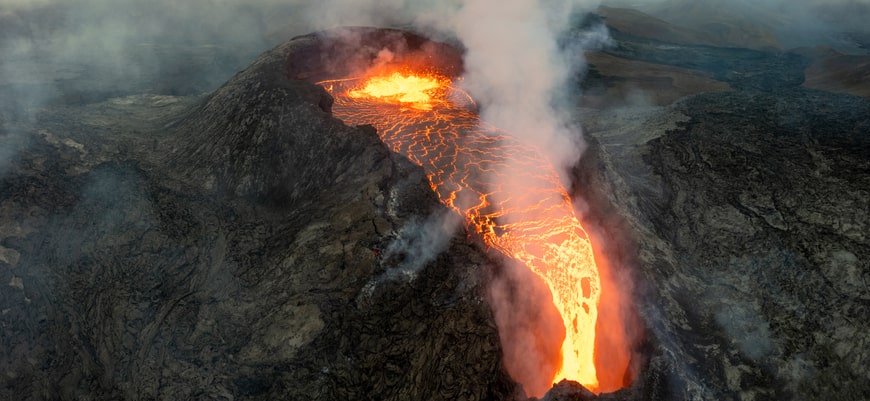
From Mount Everest as the highest mountain above sea level to Mauna Kea, the tallest mountain on Earth, there are peaks and summits all around us. Mountains used to be seen as the seats of ancient deities for the Romans, Greeks, and others, but now offer challenges to be accepted and conquered by mountaineers and adventurers alike.
And of the many types of mountains, volcanic summits are some of the most intriguing— and volatile— forms of natural landmass.
Before we continue, you might be wondering: what is a volcanic summit? Simply put, it’s the very top of a volcano, often rivaling the height of many surrounding mountains that tower above the ground. And scientists have identified a group of notable volcanic peaks that dot the earth’s continents.
So, what are the 7 volcanic summits of each continent? Read on to find out everything you need to know about the peaks in order, from Ojos del Salado to Mount Sidley— volcanic seven summits that are both dormant and active, near and far, from tallest to shortest!
1. Ojos del Salado, Argentina/Chile

Location: Argentina/Chile border, South America Elevation: 22,595 ft. or 6,893 m.
Type: Active stratovolcano
This volcano actually features the world’s highest lake, also known as the “Eyes of Salty Water”, though it is very small. Because this highest member of the seven volcanic summits is so close to the Atacama Desert at only 227 miles, its proximity to “the driest place on earth” greatly impacts its climate, meaning that only a small amount of snow stays over the winter.
And though South America’s highest peak, Aconcagua, has volcanic origins, Ojos del Salado is still active and so takes the former’s place as a volcanic seven summits member.
But Ojos del Salado hasn’t erupted fully in over a thousand years, and has only released some dry ash in the 1990s; so, while technically still an active volcano, the caldera is considered fairly safe.
2. Mount Kilimanjaro, Tanzania

Location: NE Tanzania, Africa Elevation: 19,340 ft. or 5,895 m.
Type: Dormant stratovolcano
Mount Kilimanjaro is the highest peak on the African continent, with the snowy expanse of this summit actually forming three different volcanic cones: Kibo, Mawenzi, and Shira. Kilimanjaro’s summit was first climbed in 1889 by a German geographer and Austrian mountain climber, Hans Meyer and Ludwig Purtscheller, respectively.
Of the three cones, Mawenzi and Shira are extinct and no longer pose a threat. However, Kibo is only dormant and the possibility of a future eruption remains, as well as likely losing its snow, ice, and glaciers in the next decade.
Kilimanjaro is the highest volcano in the Eastern Hemisphere, and is actually the highest mountain free-standing above sea level.
3. Mount Elbrus, Russia
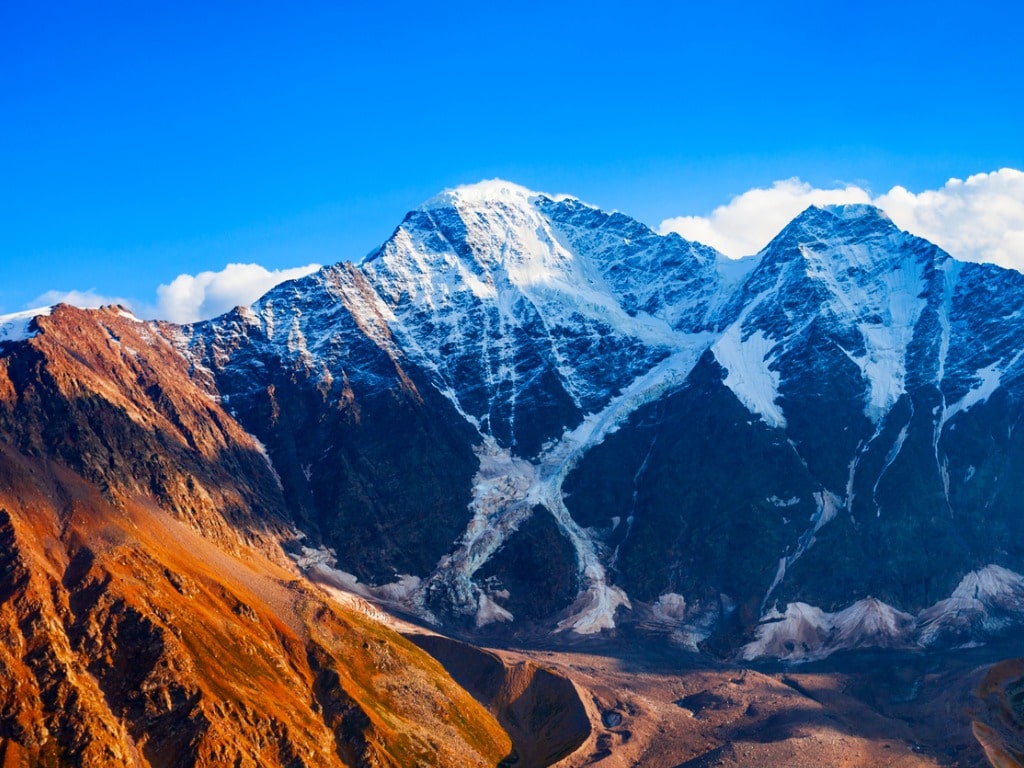
Location: Mineralinye Vody, Russia, Europe Elevation: 18,510 ft. or 5,642 m.
Type: Dormant stratovolcano
You can find this dormant volcano in southern Russia. Indeed, Mount Elbrus is the highest peak in Europe and is nestled in the Caucasus Mountain Range that borders Asia, only miles away from Georgia’s border.
Mount Elbrus is known for its technically simple climb, but incredibly volatile, high-altitude weather conditions that can trouble climbers.
And this volcanic peak was also spotted by early adventurers of the ancient Greek world— including historian Arrian of Nicomedia, who related it to the summit where Prometheus was hung aloft by the gods as punishment for stealing their fire.
4. Pico de Orizaba, Mexico
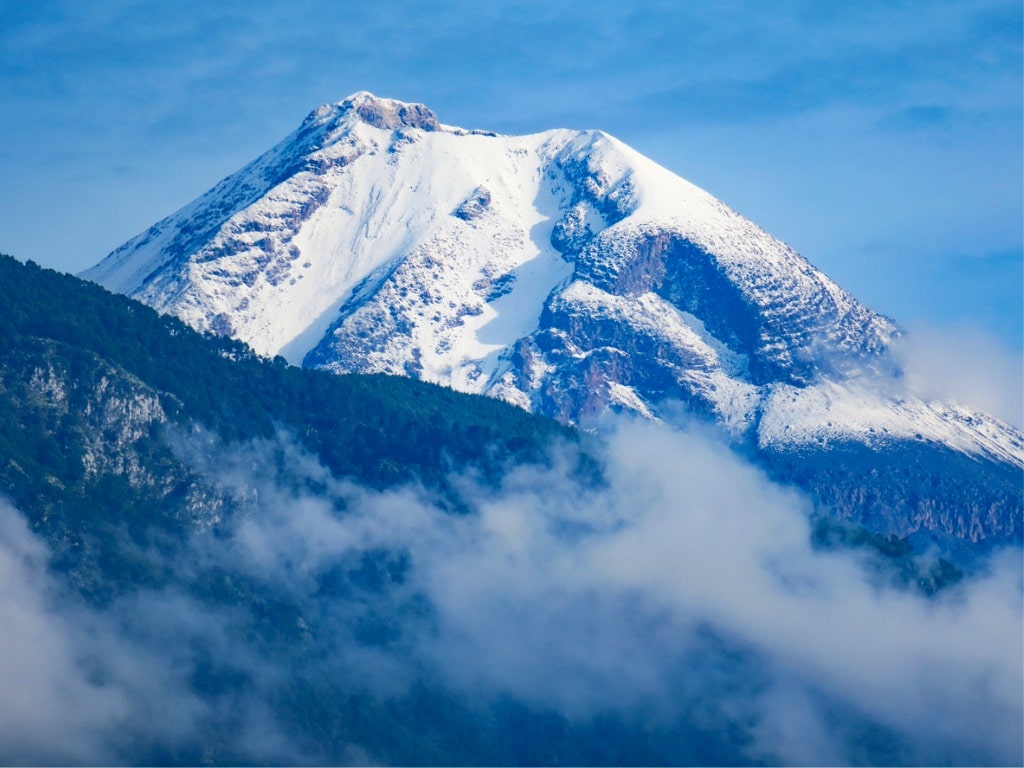
Location: Veracruz, Mexico, North America Elevation: 18,491 ft. or 5,636 m.
Type: Dormant stratovolcano
Pico de Orizaba, or “star mountain” in its local Náhuatl name, is the third highest mountain in North America, following Alaska’s Mount Denali and the Yukon’s Mount Logan. As such, its elevation makes it cold enough to be home to plenty of glaciers, including the largest one in Mexico, called Gran Claciar Norte, and seven others.
The surrounding mountains make up the Trans-Mexican Volcanic Belt and Pico de Orizaba itself has been important to both Hispanic and pre-Hispanic cultures, such as the Aztecs and Totonac people, including their myths, legends, and more.
5. Mount Damavand, Iran
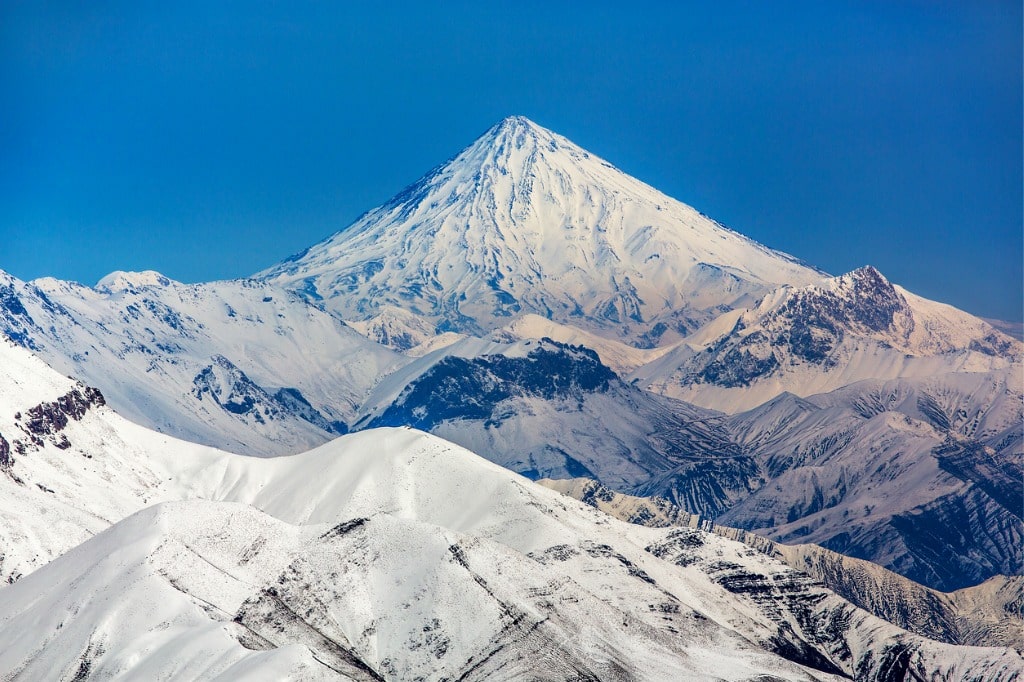
Location: Māzandarān, Iran, Western Asia Elevation: 18,406 ft. or 5,610 m.
Type: Possibly active stratovolcano
If you picture a perfectly shaped cone when you close your eyes and imagine volcanic mountains, then you might be thinking of Mount Damavand. Located in the Alborz Mountains, Damavand is Asia’s tallest volcanic summit and is satisfyingly conical.
However, this volcano has had a larger impact on the surrounding area than just its size. From the early days of Iran, Persian mythology and religion linked Mount Damavand to various powerful entities, including a mighty, three-headed dragon named Aži Dahāka chained within.
And in the centuries since, the caldera itself has yielded sulfur for miners while remaining still and calm— with the last recorded eruption occurring in the height of ancient Egyptian glory, around 5300 BC.
6. Mount Giluwe, Papua New Guinea
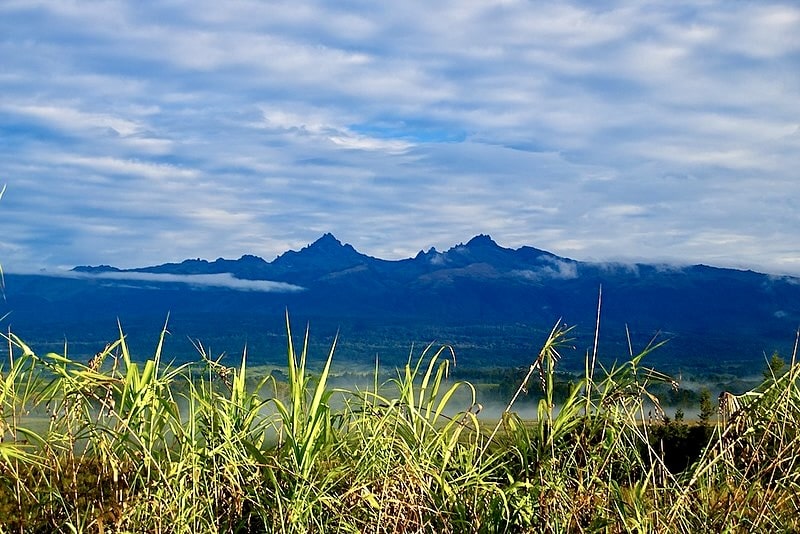
Location: Southern Highlands, Papua New Guinea, Oceania Elevation: 14,327 ft. or 4,367 m.
Type: Extinct shield volcano
Close to Australia and New Zealand, Mount Giluwe is the highest volcano on the Australian and Oceanic continent and rises above the grasslands of the Southern Highlands province. And it’s safe to say that this summit is no longer an active volcano— according to scientific research on residue, the last eruption happened about 220,000 years ago, making Mount Giluwe extinct.
But because Mount Giluwe is not as high as other volcanic peaks on a list of the 7 summits, it fosters a wider range of ecosystems, flora, and fauna across its expanse.
In fact, Mount Giluwe contains several different biomes that range from ferns and orchids to alpine blueberries and conifers for those climbing the volcanic seven summits!
7. Mount Sidley, Antarctica
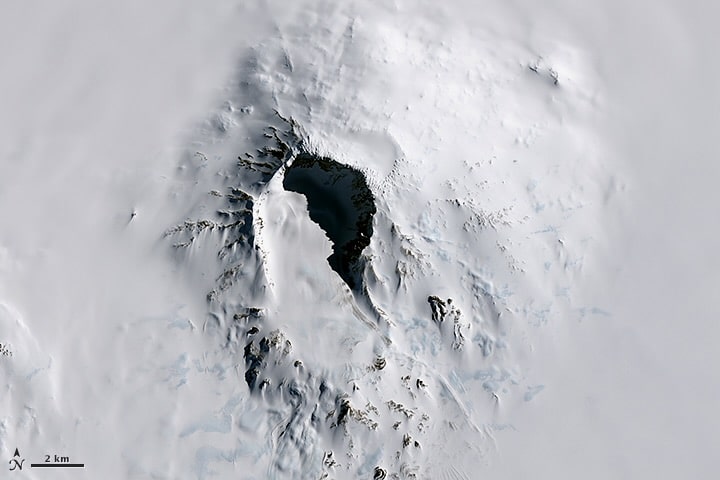
Location: Marie Byrd Land, Antarctica Elevation: 14,058 ft. or 4,285 m.
Type: Dormant, complex, polygenetic stratovolcano
The smallest of the seven summits volcanoes list is located in the frozen south of the globe: a volcano in Antarctica. Specifically, Mount Sidley is a part of the Antarctic Executive Committee Range, and while the shortest, is still one of the most remote peaks due to its polar location.
Thanks to the surrounding temperatures that can drop to -40°F in the winter, Mount Sidley maintains a gorgeous white shroud of snow across its caldera and icy slopes kept crisp by the dry winds of the continent. And Mount Sidley has stayed well preserved since the official first ascent by Bill Atkinson in 1990, continuing to intrigue climbers today.
Erupting With Information
If you are interested in more mountaineering content, why not test your knowledge with our quiz on Volcanoes of the World or Antarctic Exploration?
You can also venture outside the realm of volcanic summits and check out our list of the World’s 14 Highest Mountain Peaks!
